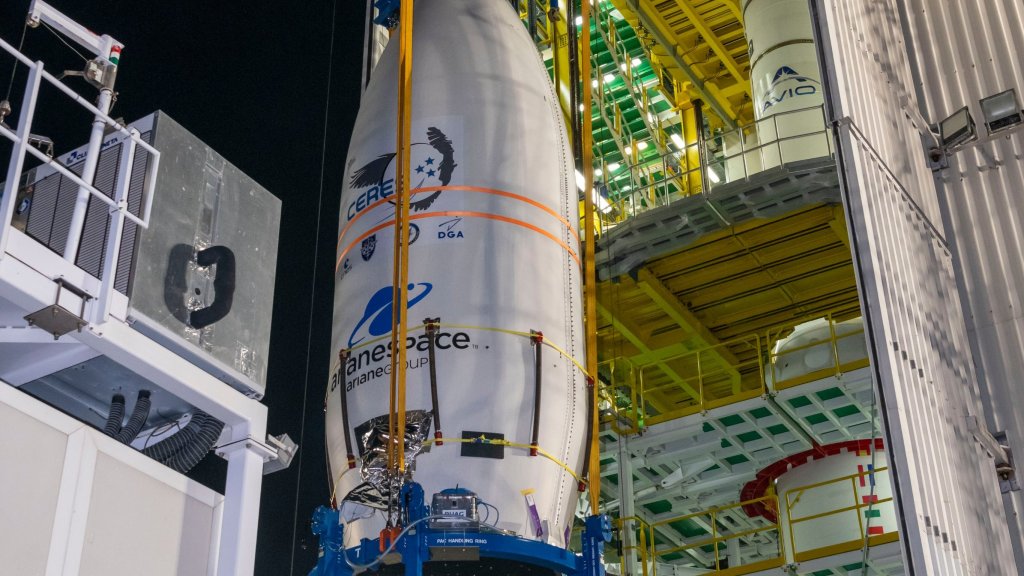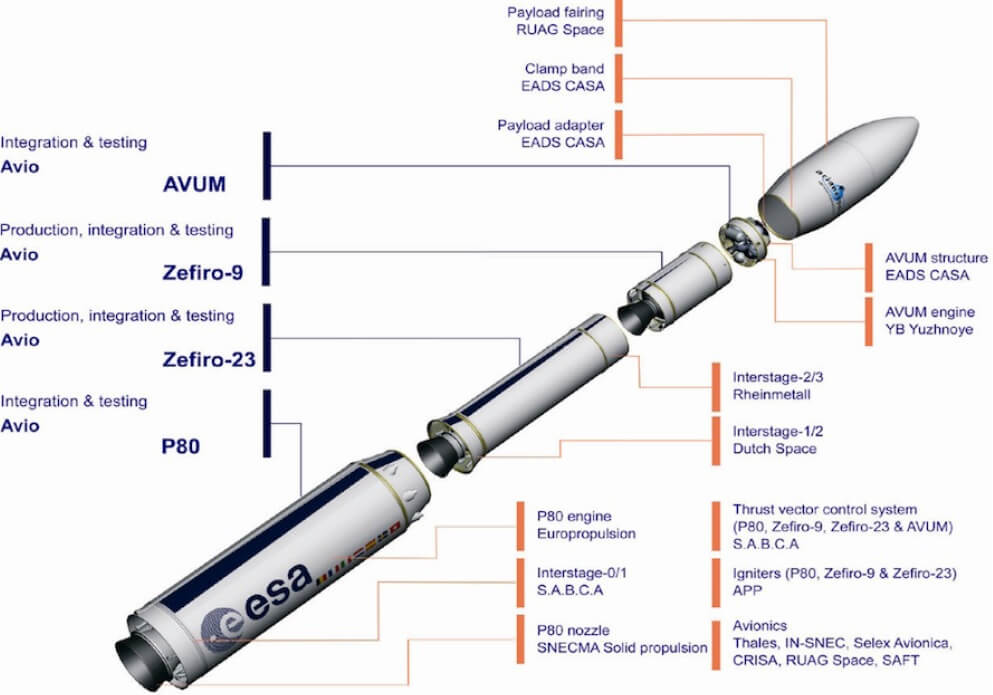Featured image: ESA/CNES/Arianespace – Photo Optique Video du CSG – S. Martin
Lift Off Time | November 16th 2021 – 09:27:55 UTC | 06:27:55 GFT |
|---|---|
Mission Name | CERES, Flight VV20 |
Launch Provider | Arianespace |
Customer | CNES on behalf of French Ministry for the Armed Forces (DGA) |
Rocket | Vega |
Launch Location | ELV-1, Guiana Space Centre, French Guiana, France |
Payload mass | 1548 kg |
Where is the spacecraft going? | Low Earth orbit (LEO) at 75° inclination |
Will they be attempting to recover the first stage? | No, this is not a capability of Vega |
Where will the first stage land? | It will crash into the Atlantic Ocean |
Will they be attempting to recover the fairings? | No, this is not a capability of Vega |
Are these fairings new? | Yes |
How’s the weather looking? | N/A |
This will be the: | – 12th Arianespace launch in 2021 – 3rd Vega launch in 2021 – 20th Vega mission – 287th Arianespace mission – 113th orbital launch attempt in 2021 |
Where to watch | Arianespace official livestream |
What Does All This mean?
Arianespace will launch three CERES (Capacité de Renseignement Electromagnétique Spatiale or Space Signal Intelligence Capacity) satellites atop the Vega rocket from the Guiana Space Centre in the French Guiana.
CERES
CERES is a French reconnaissance satellite mission, which will consist of three satellites flying in formation in low Earth orbit (LEO). Once in orbit, it will be the first operational space-based signal intelligence (SIGINT) system in Europe. The mission will be conducted by the Directorate General of Armaments (DGA) and will be supported by the French space agency, CNES.
The two primary contractors for the CERES mission are Airbus Defense and Space and Thales Defense Mission Systems. Airbus has been contracted for the space segment, including the three satellites, while Thales is contracted for the payload and providing the EliteBus satellite buses, as well as the user ground segment of the mission.

What Is Vega?
Vega is Arianespace’s small-lift rocket, built by the Italian aerospace company Avio. Vega is named after the brightest star in constellation Lyra. The rocket is 30 m (98 ft) tall, with a diameter of 3 m (~10 ft), and has three solid motor stages topped by a liquid propellant fourth stage. Vega first launched in 2012, and has suffered two launch failures, one in 2019 (VV15) and another in 2020 (VV17).

First Stage
Vega’s first stage, P80, is 10.6 m long with a diameter of 3 m. The stage uses Hydroxyl-terminated polybutadiene (HTPB) for propellant. The rocket motor burns for a duration of 110 seconds and is jettisoned at an altitude of ~53 km. The stage generates an average thrust of 3,015 kN, and has a specific impulse of 280 seconds.
Second Stage
The rocket’s second stage, Zefiro 23, is 7.5 m in length with a diameter of 1.9 m. Similarly to the first stage, this stage uses HTPB propellant. The rocket motor burns for a duration of 77 seconds, providing 1,122 kN of thrust, and has a specific impulse of 287.5 seconds.
Third Stage
The third stage, Zefiro 9, is 3.9 m long with a diameter of 1.9 m. Just like the first and second stages, the third stage also uses HTPB propellant. This stage’s motor provides 314 kN of thrust while it burns for a duration of 117.1 seconds. It has a specific impulse of 295.2 seconds.

Fourth Stage
The fourth and final stage of the Vega rocket, AVUM (Attitude & Vernier Upper Module), is 1.7 m long, with a diameter of 2 m. The stage uses hypergolic propellants, unsymmetrical di-methyl hyrdazine (UDMH) for fuel and nitrogen tetroxide (N2O4) as oxidizer. On this stage, the engine burns for 723 seconds, with a specific impulse of 314.6 seconds.
Following the first burn, the stage will enter a coast phase for 37 minutes. After this the engine will restart for a second burn, which will last just over a minute.
Fairings
Vega’s fairings were designed and manufactured by Swiss company RUAG space. They are 7.8 m tall and 2.6 m in diameter, with a mass of 400 kg.





